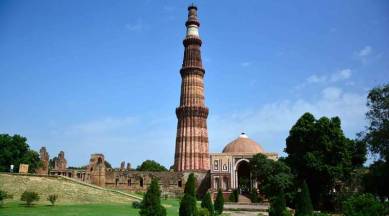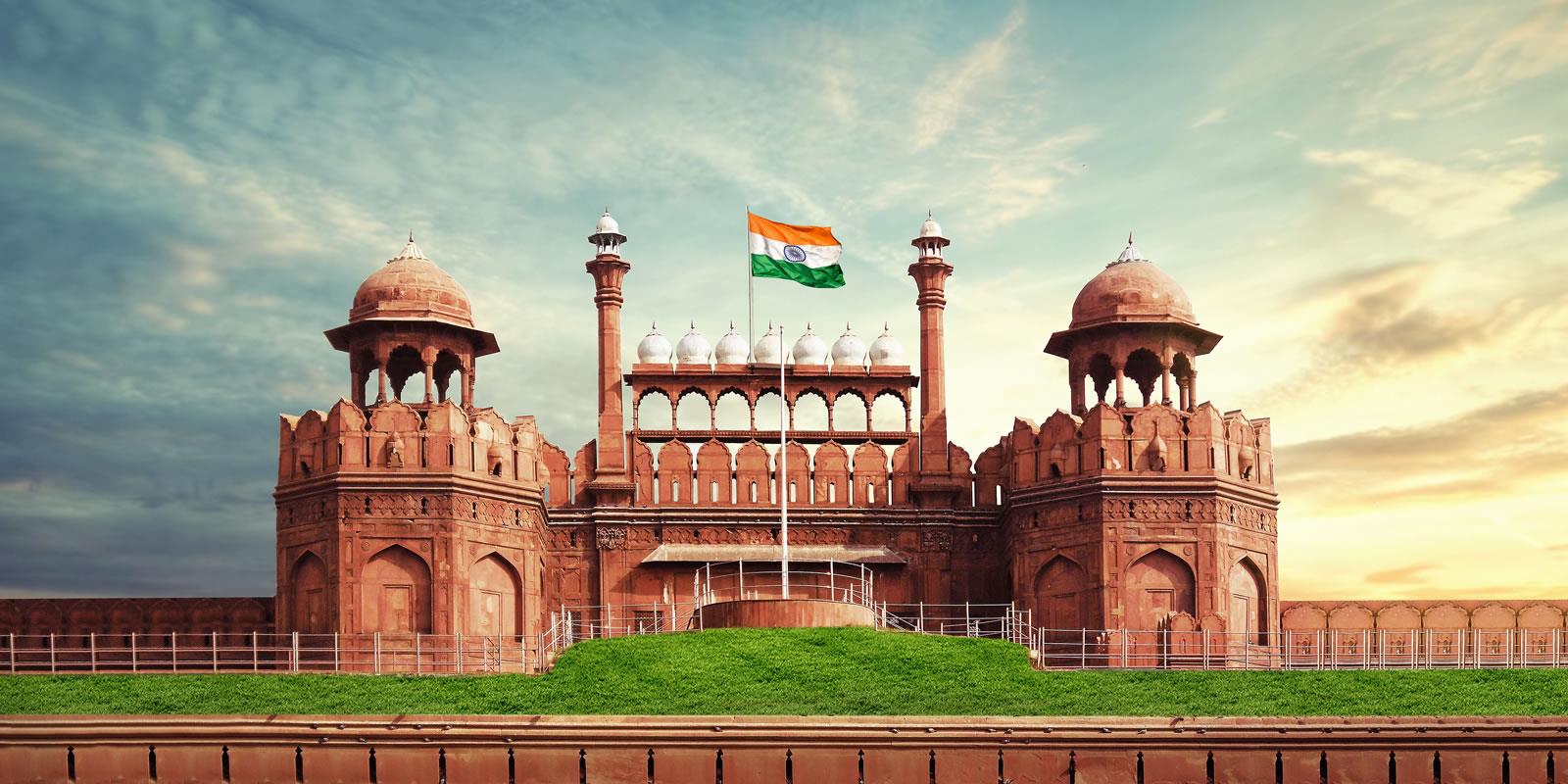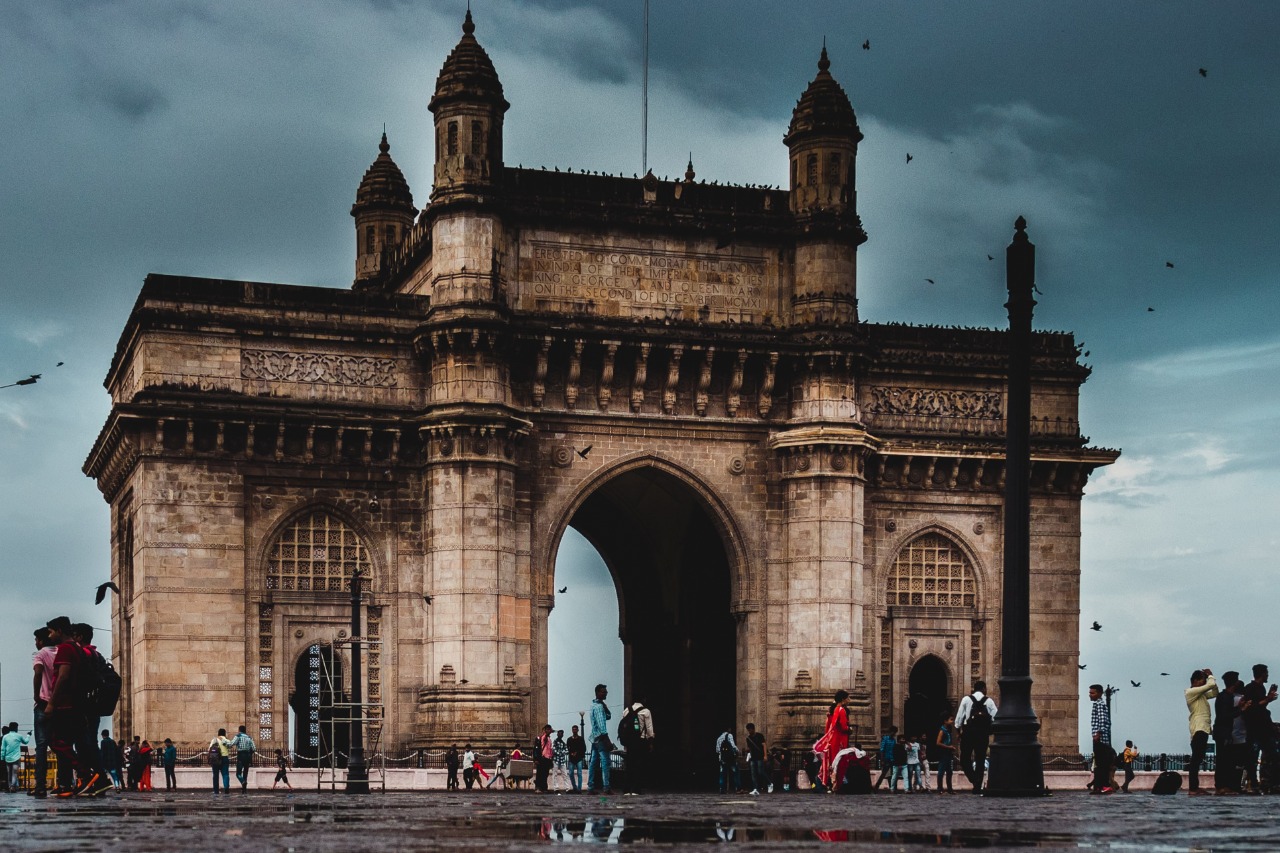Taj Mahal, Agra
Located in Agra, the Taj Mahal is a symbol of eternal love. As you approach, the majestic white marble structure leaves you mesmerized. The history behind it is as enchanting as the architecture itself. Built by Emperor Shah Jahan in memory of his beloved wife Mumtaz Mahal, its significance as a UNESCO World Heritage Site is immense. The intricate designs and symmetrical layout reflect a perfect blend of Persian, Islamic, and Indian architectural styles. The Taj Mahal stands as an epitome of timeless beauty and romance.
Taj Mahal History and significance

The Taj Mahal was built by Emperor Shah Jahan in memory of his wife Mumtaz Mahal. It symbolizes eternal love and devotion. Construction began in 1632 and took around 20 years to complete. The mausoleum’s significance as a UNESCO World Heritage Site highlights its historical importance. It stands as a masterpiece of Mughal architecture and is revered for its beauty worldwide. The Taj Mahal’s history is rich with romance and cultural significance, making it a must-visit historical site in India.
Taj Mahal Architecture and design
The Taj Mahal’s architecture showcases intricate details in white marble. Its main mausoleum features a dome and minarets, reflecting Persian and Mughal design influences. The symmetrical layout and gardens enhance its beauty. The calligraphy and intricate carvings on the walls add to its grandeur. The reflection pools amplify its magnificence, creating a stunning visual effect. The combination of geometric patterns and elegant craftsmanship makes the Taj Mahal a masterpiece of architectural design.
Qutub Minar, Delhi
Standing tall in Delhi is the majestic Qutub Minar, a UNESCO World Heritage Site. You’ll be amazed by its historical significance dating back to the 12th century when it was built by Qutb-ud-din Aibak. The minaret rises over 230 feet high with intricate carvings and inscriptions. As you explore, you’ll witness the fusion of Indo-Islamic architecture in its detailed craftsmanship. The Qutub Minar complex also includes surrounding ruins that tell tales of ancient India’s rich past.
Qutub Minar Historical background
The Qutub Minar in Delhi has a rich historical background that traces back to the 12th century. It was built by Qutb-ud-din Aibak, the founder of the Delhi Sultanate after his victory over the last Hindu kingdom in Delhi. Initially, the minaret was constructed to commemorate the triumph of Islam in India and served as a symbol of power. Over the centuries, it has endured as a remarkable testament to India’s architectural and cultural heritage.
Qutub Minar Architectural features

The Qutub Minar stands tall as a testament to fine Islamic architecture with intricate carvings and inscriptions on its sandstone walls. You’ll notice the distinctive fluted shaft with intricate geometric patterns, which gradually taper off as you look up. The balconies on different levels add a touch of elegance to the structure, with each balcony showcasing unique designs. The topmost balcony provides a breathtaking view of the surrounding landscape, making it a must-visit for architecture enthusiasts.
Red Fort, New Delhi
Located in the heart of New Delhi, the Red Fort is a symbol of India’s rich history. As you walk through its imposing gates, you will be transported back in time to the era of Mughal rulers. The fort’s architecture is a blend of Persian, Timurid, and Indian styles, reflecting the cultural diversity of the period. Its massive walls and intricate carvings tell stories of power and grandeur, making it a must-visit historical site in India.
Red Fort History and importance

The Red Fort holds immense historical significance as it served as the main residence of Mughal emperors for nearly 200 years. Its construction was initiated by Emperor Shah Jahan in 1638 and completed in 1648. The fort symbolizes the grandeur and power of the Mughal Empire, showcasing exquisite architecture and design. It has witnessed key historical events, making it a crucial part of India’s heritage. Visiting the Red Fort allows you to immerse yourself in the rich history of India’s past rulers.
Red Fort Structural layout and artistic elements
As you explore the Red Fort, you will be fascinated by its intricate structural layout. The fort is designed in a symmetrical style with beautiful gardens and marble embellishments. The artistic elements include delicate carvings, intricate patterns, and elegant calligraphy on the walls. The use of red sandstone adds a sense of grandeur to the fort’s architecture. Each section of the fort displays a blend of Persian, Timurid, and Indian architectural influences, creating a visually stunning experience for visitors.
Jaipur City Palace, Jaipur

Located in the heart of Jaipur, the City Palace is a magnificent blend of Rajput and Mughal architecture. You can explore the rich history of the royal family through the palace’s various courtyards, gardens, and buildings. Admire the intricate artwork, stunning frescoes, and antique artifacts that reflect the opulence of Rajasthan’s past rulers. Don’t miss the Chandra Mahal and Mubarak Mahal sections, which offer a glimpse into the royal lifestyle. A visit to Jaipur’s City Palace is a journey back in time.
Jaipur City Palace Historical origins
The Jaipur City Palace was built in the early 18th century by Maharaja Sawai Jai Singh II, the founder of Jaipur. He commissioned the construction to symbolize the wealth and power of the Rajput rulers. The palace served as the royal residence and administrative center of the city. Its architecture reflects a blend of Rajput, Mughal, and European styles, showcasing the cultural diversity and grandeur of the era. The historical origins of the City Palace illustrate the rich heritage of Jaipur’s royal lineage.
Jaipur City Palace Cultural heritage and royal artifacts
Explore the Jaipur City Palace to witness a blend of cultural heritage and royal artifacts. Marvel at the intricate craftsmanship of Rajput and Mughal artistry displayed in the palace’s interiors. Admire the opulent treasures, including ancient manuscripts, paintings, and exquisite jewelry that belonged to the royal family. Immerse yourself in the rich history of Jaipur’s royalty through the preserved artifacts that depict the grandeur and sophistication of bygone eras. Your visit to the palace will transport you to a world of regal splendor and artistic excellence.
Gateway of India, Mumbai

As you stand before the impressive Gateway of India, feel the historical significance it holds as a symbol of Mumbai’s maritime heritage. This iconic monument served as the entry point for British viceroys and dignitaries during the colonial era. Admire its Indo-Saracenic architectural style, blending Hindu and Muslim influences. The intricate carvings and grandeur of the structure reflect the city’s rich past. Visitors flock to this waterfront monument, soaking in its grandeur and historical importance.
Gateway of India Significance and historical context
The Gateway of India stands as a symbol of Mumbai’s historical importance as a maritime gateway. It was built to commemorate the visit of King George V and Queen Mary to Mumbai in 1911. The monument holds significance as the departing point for British troops after India gained independence in 1947. Being a witness to key historical events, the Gateway of India holds a special place in the heart of every Indian.
Gateway of India Architectural style and influence
The architectural style of the Gateway of India combines Hindu and Muslim influences, reflecting Mumbai’s diverse cultural heritage. The grand archway showcases Indo-Saracenic design, characterized by intricate carvings, domes, and minarets. The influence of the 16th-century Gujarati architecture is evident in the stone screens and balconies. This fusion makes the Gateway of India a unique blend of different architectural traditions, symbolizing unity in diversity.
Conclusion
Reflect on the importance of India’s historical sites. They hold the stories of ancient civilizations and showcase the country’s rich cultural heritage. Preserving these sites is crucial for future generations to learn from and appreciate. Tourism boosts local economies and raises awareness about historical significance. Support conservation efforts to ensure these treasures remain for years to come. Your visit to these sites contributes to their preservation and helps sustain India’s cultural legacy.
Significance of India’s historical sites

India’s historical sites are significant because they hold tales of bygone eras, showcasing the diverse cultures and architectural brilliance of ancient civilizations. Visiting these sites allows you to immerse yourself in India’s rich heritage, offering a glimpse into the country’s storied past. By preserving these sites, we uphold our cultural legacy for future generations to cherish and learn from. Their historical value is a testament to the enduring traditions and achievements of India’s past civilizations.
Preservation efforts and tourism impact
Preservation efforts ensure India’s historical sites remain intact for future generations. Strict conservation measures prevent deterioration and maintain the sites’ original charm. Tourism significantly boosts local economies near these sites, creating jobs and supporting small businesses. Travelers from around the world experience India’s rich history firsthand, contributing to cultural exchange and understanding. By balancing preservation with tourism, these sites continue to thrive and share their stories with the world.For More blogs visit Hillw
